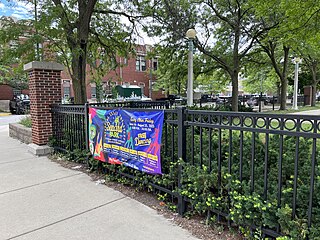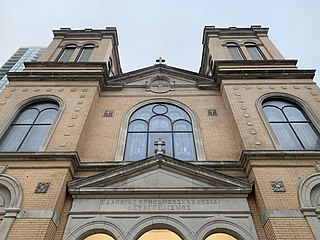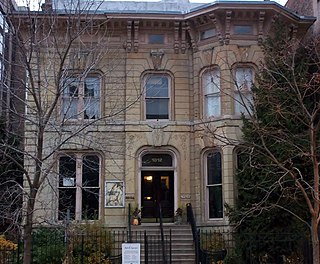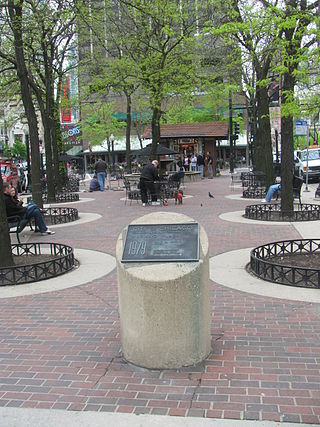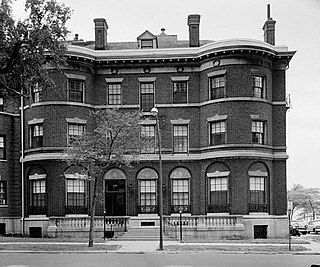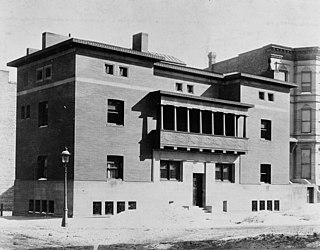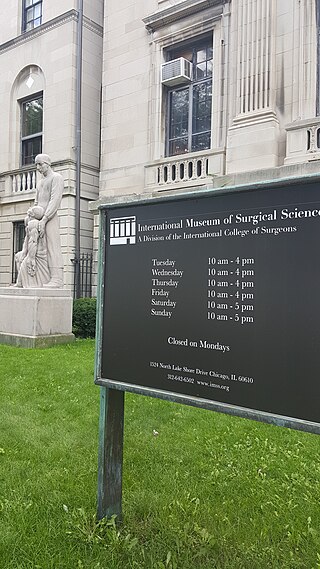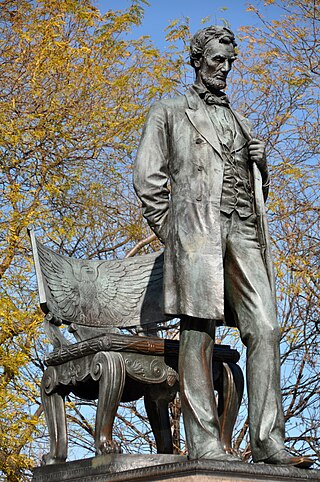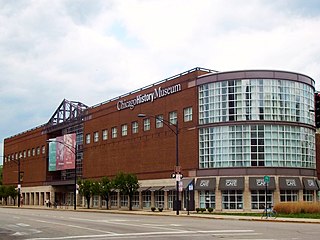Self-guided Sightseeing Tour #11 in Chicago, United States
Legend
Tour Facts
4.5 km
113 m
Experience Chicago in United States in a whole new way with our free self-guided sightseeing tour. This site not only offers you practical information and insider tips, but also a rich variety of activities and sights you shouldn't miss. Whether you love art and culture, want to explore historical sites or simply want to experience the vibrant atmosphere of a lively city - you'll find everything you need for your personal adventure here.
Activities in ChicagoIndividual Sights in ChicagoSight 1: Seward Park
Seward Park is a public park in Old Town, Chicago, Illinois named after William H. Seward. The land for the park was acquired in 1907 and the park officially opened on July 4, 1908.
Sight 2: Church of the Ascension
The Church of the Ascension is an Anglo-Catholic parish in the Episcopal Diocese of Chicago. Founded in 1857 as a mission of St. James Church, it is now located on North La Salle Drive on Chicago's Near North Side. The church became a part of the Anglo-Catholic movement in 1869. The principal service on Sunday is the Solemn High Mass celebrated at 11 a.m., according to Rite II in the Episcopal Church's Book of Common Prayer (1979). This Mass is celebrated at the High Altar, and includes three sacred ministers, many acolytes, incense, and music provided by a professional choir. The mass includes processions and other devotions on certain feasts and holy days.
Sight 3: Annunciation Greek Orthodox Cathedral
The Annunciation Greek Orthodox Cathedral is a Greek Orthodox cathedral located in Chicago, Illinois. It is the mother church of the Metropolis of Chicago. The current membership includes some 400 families.
Wikipedia: Annunciation Greek Orthodox Cathedral (Chicago) (EN)
Sight 4: Washington Square
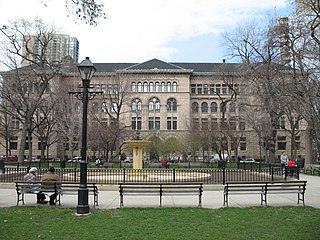
Washington Square, also known as Washington Square Park, is a park in Chicago, Illinois. A registered historic landmark that is better known by its nickname Bughouse Square, it was the most celebrated open air free-speech center in the country as well as a popular Chicago tourist attraction. It is located across Walton Street from Newberry Library at 901 N. Clark Street in the Near North Side community area of Chicago, Illinois, United States. It is Chicago's oldest existing small park. It is one of four Chicago Park District parks named after persons surnamed Washington. It was added to the National Register of Historic Places on May 20, 1991.
Sight 5: Palette and Chisel
The William Waller House is a historic house located at 1012 N. Dearborn St. in the Near North Side neighborhood of Chicago, Illinois. The home was built in 1875–76, shortly after the Great Chicago Fire, during the development of Chicago's prosperous Gold Coast district. The house's Italianate design features a stone exterior, a double bay front, a bracketed and ornamented cornice, arched windows, and decorative keystones. Though Italianate rowhouses are still common in the Near North Side, freestanding Italianate homes are relatively rare, and the Waller House is one of the best-preserved examples of these homes.
Sight 6: Mariano Park
Mariano Park is a small public park in Chicago at the intersection of Rush Street and State Street in Gold Coast. It has an official address of 1031 North State Street. The land was initially acquired by the city in 1848 but was not transferred to the Chicago Park District until 1959. Mariano Park was renamed for Louis Mariano, a reporter and editor for the Chicago Daily News, in 1970. Mariano was an editor for World Book Encyclopedia and an associate editor for Science Year, the World Book Science Annual, as well as the assistant managing editor of the World Book Yearbook from 1963 through 1970. His column, "North Looping with Lou Mariano" featured happenings and local celebrities from the vantage point of his office, a table at O'Connell's Sandwich Shop on the corner of Bellevue and Rush Streets. It has a structure designed by Birch Burdette Long, who was a Frank Lloyd Wright protege. The area is colloquially known as "Viagra Triangle" for the many older gentlemen taking young ladies on dates at bars and restaurants.
Sight 7: Fortnightly of Chicago
The Lathrop House, also known as the Bryan Lathrop House, is a Georgian style house at 120 E Bellevue Place in the Gold Coast neighborhood of Chicago, Illinois, United States. The house was built in 1892 by McKim, Mead & White for Bryan Lathrop. In 1922 the house was sold to the Fortnightly Club. The club still occupies the building. It was designated a Chicago Landmark on May 9, 1973, and it was listed on the National Register of Historic Places in 1974.
Sight 8: Charnley-Pesky House Museum
The James Charnley Residence, also known as the Charnley-Persky House, is a historic house museum at 1365 North Astor Street in the near northside Gold Coast neighborhood of Chicago, Illinois. Designed in 1891 and completed in 1892, it is one of the few surviving residential works of Adler & Sullivan.
Sight 9: International Museum of Surgical Science
The International Museum of Surgical Science is a museum located in the Gold Coast neighborhood of Chicago, Illinois. It is operated by The International College of Surgeons and features exhibits dealing with various aspects of Eastern and Western medicine. Dr. Max Thorek founded the International College of Surgeons (ICS) in 1935 and originally intended for the museum to highlight the many artifacts and manuscripts the college housed, but artifacts where later added strictly for the museums collection. The museum opened to the public on September 9, 1954. The museum's exhibits are displayed by theme or surgical discipline. Displays include photographs, paintings and drawings, sculpture, medical equipment, skeletons, medical specimens and historic artifacts. The library contains more than 5,000 rare medical texts.
Wikipedia: International Museum of Surgical Science (EN), Website
Sight 10: Abraham Lincoln: The Man
Abraham Lincoln: The Man is a larger-than-life size 12-foot (3.7 m) bronze statue of Abraham Lincoln, the 16th president of the United States. The original statue is in Lincoln Park in Chicago, and later re-castings of the statue have been given as diplomatic gifts from the United States to the United Kingdom, and to Mexico.
Sight 11: Chicago History Museum
Chicago History Museum is the museum of the Chicago Historical Society (CHS). The CHS was founded in 1856 to study and interpret Chicago's history. The museum has been located in Lincoln Park since the 1930s at 1601 North Clark Street at the intersection of North Avenue in the Old Town Triangle neighborhood, where the museum has been expanded several times. Long known as the CHS, the society adopted the name, Chicago History Museum, in September 2006 for its public presence.
Sight 12: The Second City
Share
How likely are you to recommend us?
Disclaimer Please be aware of your surroundings and do not enter private property. We are not liable for any damages that occur during the tours.
GPX-Download For navigation apps and GPS devices you can download the tour as a GPX file.
